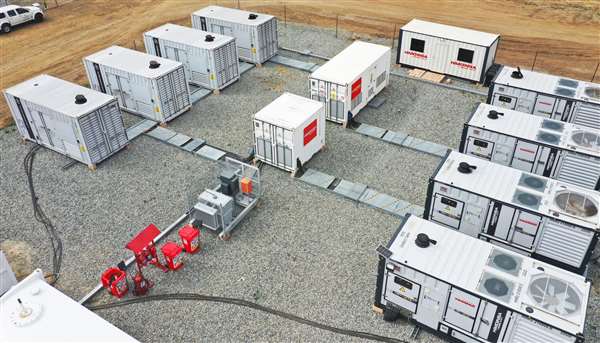Himoinsa Southern Africa recently installed 8 MW of prime power equipment for the Virginia LNG and helium facility, Free State, South Africa.
Helium is used in the manufacturing of semiconductors and fiber optic cable across the world. It also provides deep cryogenic cooling for superconducting magnets which are key elements in magnetic resonance imaging (MRI) devices.
Read also:Construction of South Africa?s first liquid helium plant commences
To run the Virginia LNG and helium facility site, eight completely synchronized generator sets, neutral earth transformers, fuel tanks, and a control room were installed. A 200 kVA unit was also offered for temporary use in the construction phase.
Equipment provided for Virginia LNG and helium facility
The supplied equipment includes 4x HRMW1270 MTU engines, 4 x HRYW1275 Yanmar engines, 2 x 33 000 L Fuel Tank, 2 x TRANSFORMERS 400V/11kv 11kV, and 1 x HRFW200 Iveco engine.
South Africa’s first onshore petroleum production rights are held by Tetra4, a fully owned subsidiary of Renergen. The Virginia Gas Project of Tetra4 is located in the South African Free State. Liquid helium will be produced as part of the project.
The facility makes South Africa one of only eight nations in the world to produce and export liquid helium. Virginia LNG and helium facility is the country’s first onshore LNG operation. It is also the first helium facility in sub-Saharan Africa.
Renergen had to proceed with a self-built electrical connection to the Eskom grid infrastructure in order to continue with the construction process. This was because there was no electrical connection available. In the interim, they had to ensure they had a temporary, prime power solution to guarantee that the Phase 1 Virginia Gas Project could be commissioned on schedule.
For at least eight months, local utility Eskom wasn’t able to supply the facility with the dedicated power supply it needed. The Himoinsa team installed as well as commissioned a complete power plant. The exercise only took Himoinsa three weeks to install.
It was critical to avoid power tripping. It would limit the amount of production possible due to the high step loads placed on the massive compressors. The compressors are used in the manufacturing process. A sufficient amount of power redundancy was ensured by the 8 MW, 11 kV solution.

